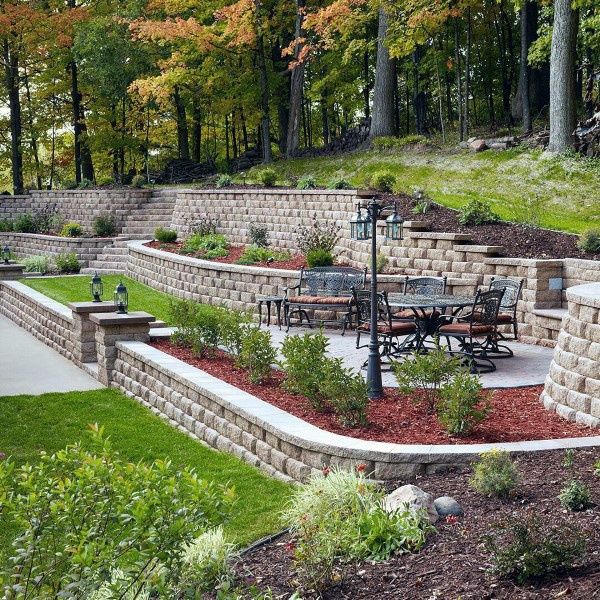How to Install Retaining Fences on Steep Slopes
Melbourne Retaining Walls photographers have created a number of images of Retaining Walls at Steep Slopes. These images can be viewed or downloaded. Building A Retainingwall On Steep Slope Tyres2c Due To The Steep Slope Required To Build Two, Slopegrid Retainingwall, 10 Best Inspiring Retainingwall Ideas For Steep Slopes… Read on Retaining walls built on steep slopes are constructed to protect masonry chimneys or wells. The structure acts as an additional support for the roof structure to reduce structural loads. The steep angle of the hill prevents the water to flow downward and create pools under the foundation. The walls act as a watertight seal to prevent snow loads and leakage.
How to Install Retaining Fences on Steep Slopes

It is important to ensure that your retaining wall is at least 25ft higher than the slope in order to install a toilet tank. Self supporting tanks are a better option if the soil density is less. Concrete supports should be used in areas with flat terrain. For every 100 feet of span, the wall should be 1 foot thick. With the help retaining walls, Self-Supporting swimming pools can be installed. If you have ground walls, you can use the space to build an above-ground pool. Concrete or brick-based panels are options if there aren’t ground walls.
How to Install Retaining Fences on Steep Slopes
Brick-based panels provide excellent insulation and superior structural soundness. Concrete-based walls, however, are the best choice if your desire to modify the slope of your swimming pool. You can also choose which type of concrete or brick to use depending on your landscape. A retaining wall is very useful for providing an optimum level of protection against the harsh climate conditions. A steep hill can make it very dangerous if the sun’s heat hits the swimming pool.
North Willamette Valley residents should put up a Retaining wall in order to keep their swimming pools safe. You can make retaining walls according to the soil available in your area. If you live in a low lying area, you should use concrete-based panels. If you live on a steep slope, stone-based panels are the best option. Clay walls will not work on steep slopes. There are many types of panels that can be used to build walls around pools. Self supporting panels are made of steel that allow the panels to float on top of the water.
These walls can last many years. They are durable and maintain a clean appearance. Self-supporting walls can also be used for commercial or residential purposes. A Gabion panel can be a very useful tool in construction. The Gabion panel, a curved panel, helps to retain soil on a meadow or steep hillside. These panels come in both a rectangular and round version. If you are going in for retaining walls on steep slopes, then the rectangular model is the ideal choice. It features an interlocking structure that eliminates gaps between panels. The reason the rectangular panel is preferred to the circular is because it facilitates the compacting of soil.
Usually, when you build an above-ground pool, you have to add a lot of gravel to the bottom of the pool. This causes a lot of extra work for the digger. If you prefer a flat wall, you can simply divert gravel to one end. Also, ensure that the distance between panels is not less than three feet. You might be wondering if installing retaining walls on steep slopes is a problem. You will soon realize that installing these panels on a sloped surface will present some unique challenges. The panels will not be able to be placed exactly where you want them. The slope moves with the sun’s rays so you must position the panels above the ground both in the morning and evening. Otherwise, you will have a section of dead grass in your yard.
Another problem that you might encounter when installing retaining walls on steep slopes is When the sun sets, you will find that there is no cover for the panels. Algae can grow rapidly when there is no cover. You can solve this problem by digging a tunnel deep enough that it covers the panel from the sun. You can then keep the algae under control to ensure that your Retainingwalls On Steep Slopes do not get damaged.
Melbourne Retaining Walls photographers have created a number of images of Retaining Walls at Steep Slopes. These images can be viewed or downloaded. Building A Retainingwall On Steep Slope Tyres2c Due To The Steep Slope Required To Build Two, Slopegrid Retainingwall, 10 Best Inspiring Retainingwall Ideas For Steep Slopes… Read on Retaining walls built on…
